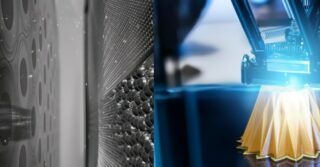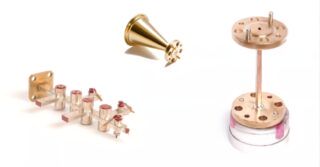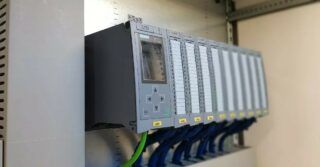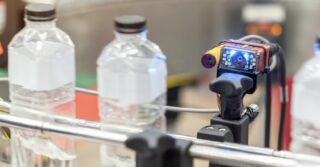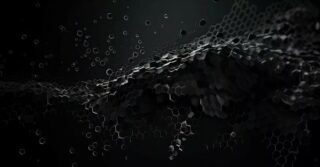Today’s production dynamics, the emphasis on automation, quality and quantity of information acquired about the product, at virtually every stage of production. This need has caused 3D scanners to become a permanent fixture in the measurement laboratories of all industries.
The following text will answer the fundamental question – what are 3D scanners, how do they work and where can they be used to improve production processes. We will use the example of one of the manufacturers of these devices, which is SCANTECH.
What is a 3D scanner?
3D scanners, or rather Optical Measuring Machines, are non-contact metrology systems used to capture information about the geometry of objects – even the most complex ones. In the process of 3D scanning, or 3D digitization, they convert real objects into a precise digital model, most often saved in the form of an STL triangle mesh, which can easily undergo the process of quality control or reverse engineering.
Compared to other measuring machines, such as coordinate measuring machines (CMM) or measuring arms, optical measuring machines are distinguished by their extraordinary versatility, speed and quantity of collected information as well as unparalleled mobility. Having these undoubted advantages, they are not inferior in terms of the accuracy of the generated data, keeping it at a level of up to 0.02mm.
An example here is the SCANTECH Simscan device, which, with a maximum size of 200 mm and weight of nearly 0.5 kg, is the smallest professional metrology scanner currently available on the market.
A complete set of such a 3D scanner is a small transport case and a laptop, which can be easily taken to any location to perform precise 3D measurements, even in hard-to-reach spaces, which cannot be achieved using traditional measurement methods.
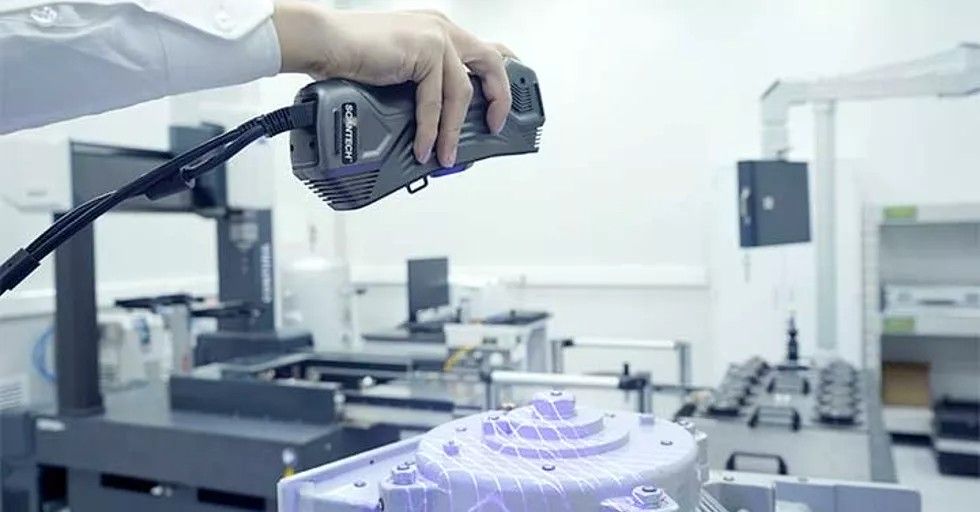
The World’s Smallest Laser Scanner – SCANTECH SIMSCAN
Types of 3D scanners
Each 3D scanner is made of a projection unit and cameras set at a known angle in the calibration process, this is necessary to be able to generate reliable data describing the measured object. Calibration is based on the scanner observing a special plate in various positions, thanks to which the system determines the angles between the cameras, which may have changed due to temperature or shocks.
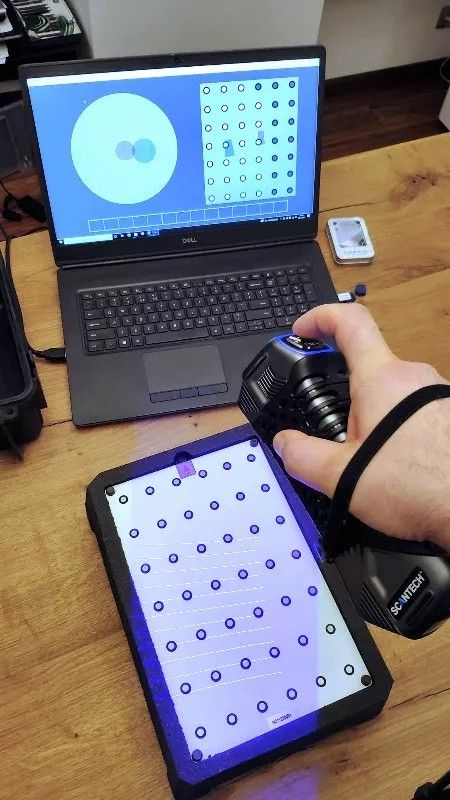
3D Scanner Calibration Process
Based on the type of projection unit, we can distinguish two main types among 3D scanners:
- structured light scanners
- laser scanners.
Modern structured light scanners most often use an LED projector and two cameras that track the change of the projected lines. This type of system requires the use of a tripod or a robot on which the head is mounted. Such measurement is carried out in a static way, which means that during a single scan neither the scanning head nor the scanned object can move. This may impose some limitations on the mobility of such a setup (due to the large weight and bulkiness of the tripods themselves) or while taking measurements in hard-to-reach spaces. In addition, special consideration must be given to measurements in industrial environments where vibrations can be generated by running machinery, which may affect the speed and quality of measurements. In such a situation, it is essential that the scanner has automatic motion control.

Structured light scanner on a tripod. (source Wikipedia – 3D scanner)
Laser scanners use a laser emitter to illuminate the measured object with a fringe pattern while two cameras are recording their distortion. The measurement process is dynamic, which means that the system generates data continuously, without interruptions for individual scans as in structured light scanners. Thanks to this, the operator or a robot arm is the tripod, significantly increasing the measurement capabilities and mobility of the system. The handheld laser scanner is easy to pack into a small carrying case and take anywhere. Moreover, vibrations generated by industrial environments are not an issue and the absence of a tripod allows measurements in tight spaces and hard-to-reach areas.
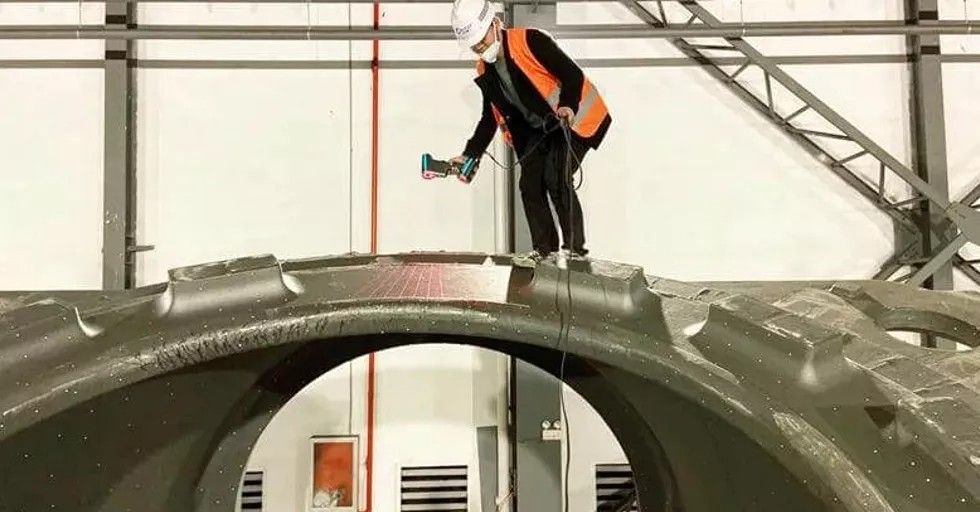
3D scanning of wind turbine hub using handheld laser scanner SCANTECH KSCAN
The principle of operation of the 3D scanner
The general principle of operation of 3D scanners is implemented thanks to the use of the Moire fringes distortion effect. It involves illuminating the surface of an object with a raster of lines of known density that are distorted according to the geometry of the object being measured. Then, using precise cameras, we can capture information about the pixels which are created on the border of the grey value between the fringe and the surface of the part. The coordinates obtained in this way are saved in the form of a digital point cloud.
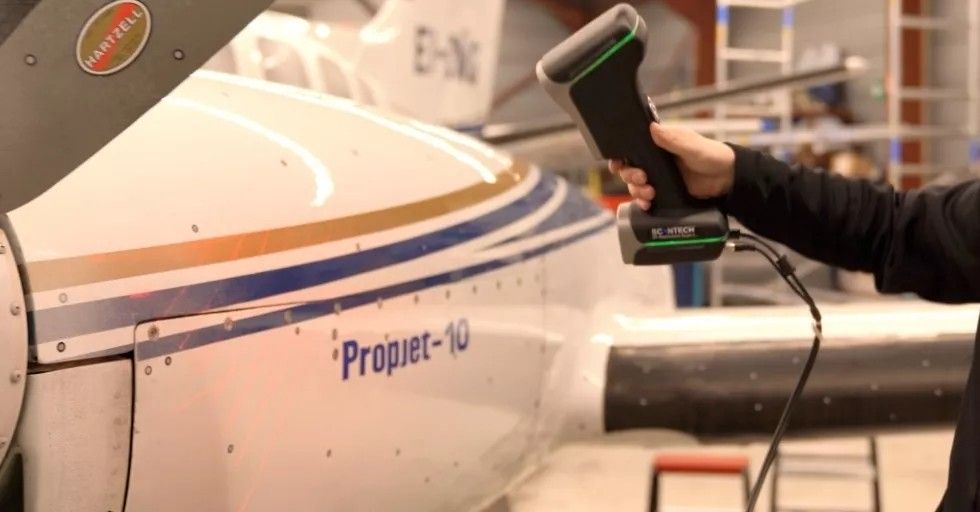
Distortion of the laser fringe pattern on the geometry of the aircraft engine housing
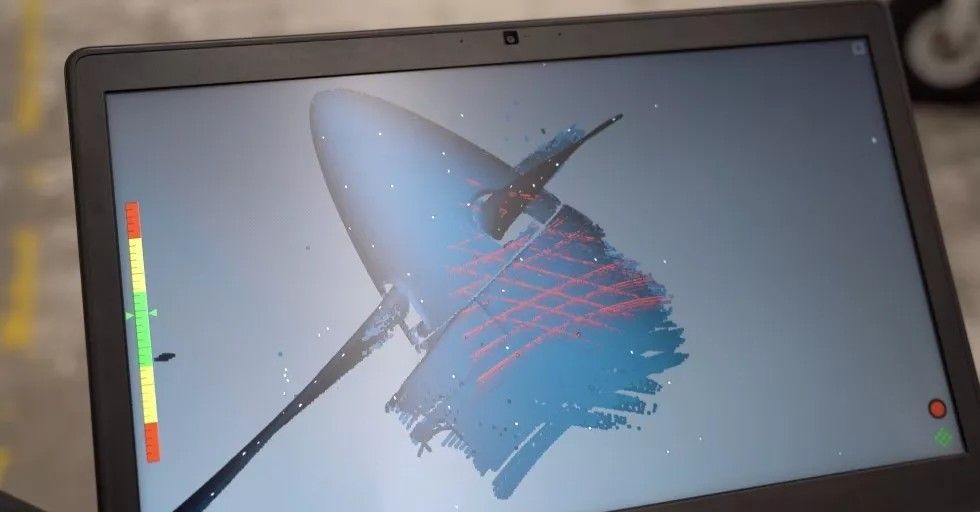
A direct view of the 3D scanning process of an aircraft engine housing
Reference points are used to create a stable and accurate point cloud. These are markers that are spread directly on or around the part, e.g. on a reference frame or holder so that the system knows how to orient itself in space and how to locate the measurement data in the global coordinate system.
For example, the SCANTECH TrackScan system uses an external tracking device, thanks to which the measurement takes place without reference points and with high accuracy.
Less precise systems combine individual scans using geometric or colour features of the part being measured.
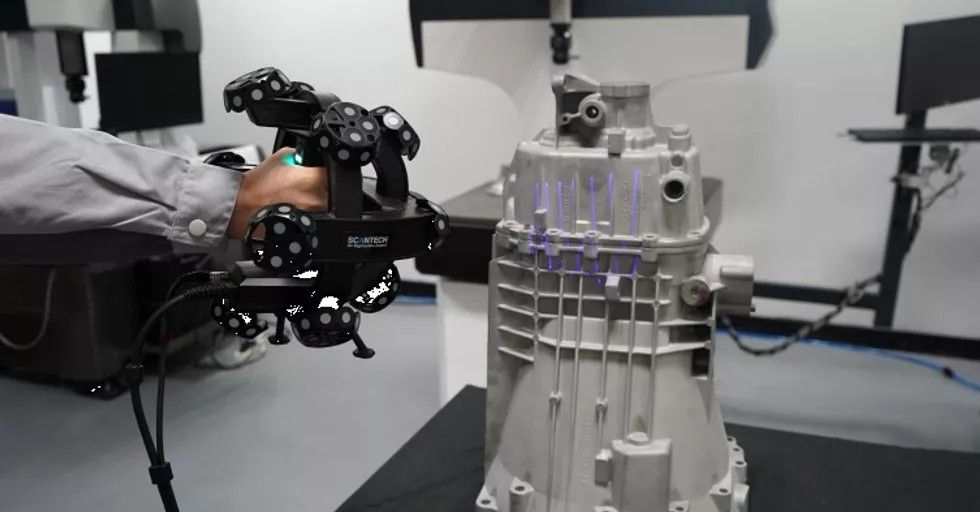
Digitizing the gearbox body without using reference points
Generated data and its post-processing
The digitization process, i.e. 3D scanning, involves moving the scanning head along the entire geometry of the measured object in such a way that the system sees all the surfaces that we want to submit for analysis. Given that the accuracy of a 3D scanner is affected by many hard to determine external factors such as temperature changes, shocks, external light sources, the material of parts, and reflections; then the information about the same surface can be recorded by multiple points. These are raw point clouds of all coordinates captured by the measurement system, which are then polygonized, i.e. automatically optimized and averaged, resulting in a uniform and precise STL triangle mesh suitable for further analysis, such as product quality control or reverse engineering.

Precise STL triangle mesh
Application of 3D scanners
Handheld laser scanners are a group of the most versatile and flexible measurement solutions available on the market. An example of this is the SCANTECH Kscan Magic, which has as many as three built-in measuring areas of different sizes, accessible at the click of a button without the need to change the optics. In addition, this scanner has a unique and patented built-in photogrammetry system, which enables large size measurements with high stability and measurement accuracy. Thus, with a single head, we are able to perform a 3D measurement of parts with dimensions ranging from several dozen millimetres to several meters.
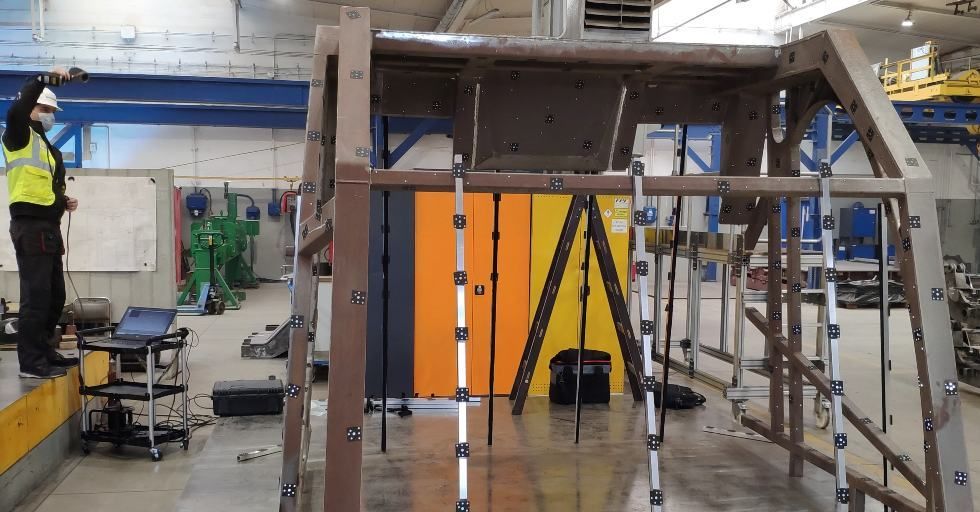
Photogrammetric measurement process of reference points on a welded frame with SCANTECH KSCAN
The most common uses of 3D scanners are for product quality control, for example, sizing or comparing the product to a nominal CAD model, and for reverse engineering, i.e. the reproduction of the actual part in digital form.
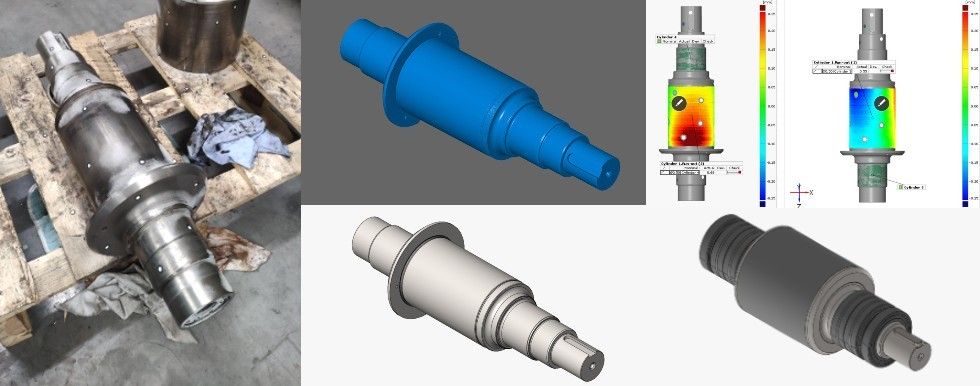
The process of shaft preparation for measurement, 3D scanning result, total run-out, shaft reverse engineering and assembly with bearings
Mobility, versatility, flexibility and measurement accuracy, allow you to use 3D laser scanners in virtually any business line and industry. They are commonly used in the automotive, heavy, transportation, energy, aerospace, medical or consumer goods industries.
Currently, the ability to digitally represent the entire, even very complex geometry, while maintaining high accuracy becomes crucial and allows the use of 3D scanning at many stages of production of parts, whole machines or vehicles. 3D scanners are widely used in the following industries: automotive, aerospace, defence, energy, heavy machinery and agricultural, shipbuilding, consumer goods or medical.
Below we present examples of using the capabilities of 3D scanners.
3D Scanning:
- Castings, forgings, moulds, tools, sand and wax cores.
- Injection moulded part, dies, plastic, carbon fibre and composite parts,
- Sheet metal parts, stamping tools, sheet metal and welded parts,
- Automotive parts, car body parts, bodywork, interiors and complete cars,Boat hulls, yacht cabins, motorboats and jet skis,
- Motorcycles, bicycles, motorcycle and bicycle frames,
- Implants, prostheses, orthoses, limbs and the whole person,
- Semi-trailers, trailers, agricultural machinery and tools,
- Steel structures, welded structures and large-size castings,
- Turbines, hubs, shafts, rotors and blades,
- Glasses, stencils and fixtures,
- 3D printing, turning, milling and CNC machining results,
- Monuments, antiques, sculptures, works of art and archaeological excavations,
- For reverse engineering and quality control.
Summary
High measurement accuracy, mobility and versatility have now made 3D scanners widely used in virtually all types of industries around the world. With the amount of data generated in the process of 3D scanning, we are able to get much more information about the quality of the manufactured product and see its potential defects where we do not even expect them. Additionally, we get the ability to recreate and optimize parts for which we do not have documentation or a CAD model, which can significantly impact the design time for new parts.
If you have parts that need to be digitized or if you are interested in learning more about innovative and professional 3D scanners or 3D scanning services, please visit our website at www.invizion.pl and contact us info@invizion.pl.


